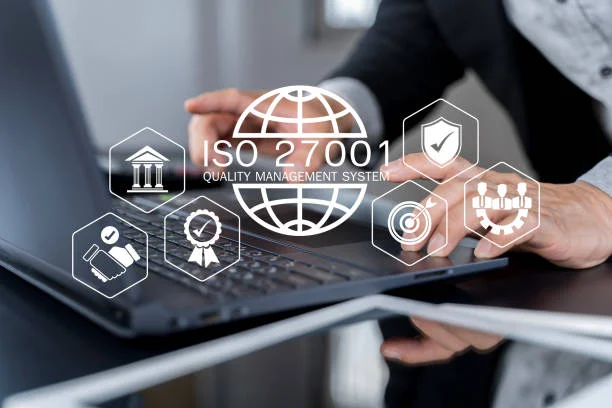In today’s digital-first world, organizations are more dependent than ever on data and technology to drive growth, efficiency, and customer satisfaction. While this reliance unlocks countless opportunities, it also brings significant risks related to data breaches, cyberattacks, and information misuse. To mitigate these risks and maintain trust, businesses are increasingly turning to internationally recognized standards for managing information security. Among the most prominent of these is ISO 27001, a globally recognized framework for Information Security Management Systems (ISMS). This article explores iso 27001 accreditation, its core principles, and its importance in building resilient and secure business environments.
What is ISO 27001 Accreditation?
ISO 27001 is part of the ISO/IEC 27000 family of standards developed by the International Organization for Standardization. It provides a structured framework for establishing, implementing, maintaining, and continuously improving an ISMS. Accreditation under ISO 27001 means that an organization has demonstrated compliance with the standard through rigorous assessment and independent certification.
The standard covers all aspects of information security, including physical, technical, and administrative controls. Its holistic approach ensures that businesses address vulnerabilities not just in technology but also in processes, policies, and human behavior. By obtaining ISO 27001 accreditation, organizations send a clear message to stakeholders that they take information security seriously and adhere to globally accepted best practices.
Unlock more value with this related post crafted to spark your next big idea.
Core Principles of ISO 27001
At its heart, ISO 27001 revolves around three fundamental principles of information security:
- Confidentiality – Ensuring that information is accessible only to those who are authorized to access it.
- Integrity – Safeguarding the accuracy and completeness of information and its processing methods.
- Availability – Ensuring that authorized users have access to information and associated assets when needed.
These principles, often referred to as the CIA triad, form the foundation of any robust security strategy. ISO 27001 integrates these principles into an organizational framework that balances technology, policies, and human resources.
The Importance of ISO 27001 Accreditation
The value of ISO 27001 accreditation extends far beyond compliance. It delivers tangible benefits that strengthen organizations across industries:
- Risk Mitigation – Accreditation ensures that risks to information are systematically identified, assessed, and managed. This proactive approach reduces the likelihood of security incidents and minimizes the impact of any that occur.
- Enhanced Trust and Reputation – Clients, partners, and stakeholders increasingly demand proof of security practices. ISO 27001 certification builds confidence, showing that the organization prioritizes data protection.
- Regulatory Compliance – With increasing legal and regulatory requirements for data protection, accreditation helps businesses meet obligations under laws such as GDPR or other privacy regulations.
- Operational Efficiency – Implementing ISO 27001 encourages streamlined processes, better-defined roles, and improved accountability, which contribute to efficiency and consistency across operations.
- Competitive Advantage – Accreditation differentiates a company in the marketplace, positioning it as a trustworthy partner.
Key Elements of the ISO 27001 Framework
The ISO 27001 standard provides a structured framework for managing information security. Its components include:
- Context of the Organization – Understanding internal and external factors that influence information security.
- Leadership and Commitment – Top management must demonstrate active involvement, establish policies, and assign roles.
- Planning – Identifying risks and opportunities, setting security objectives, and planning actions to achieve them.
- Support – Ensuring resources, training, and communication are in place to sustain the ISMS.
- Operation – Implementing processes and controls to address risks and opportunities.
- Performance Evaluation – Monitoring, measuring, and auditing the ISMS to ensure effectiveness.
- Improvement – Continually enhancing processes and addressing non-conformities.
Together, these elements provide a continuous cycle of planning, executing, checking, and improving, often referred to as the Plan-Do-Check-Act (PDCA) model.
The Certification Process
Achieving ISO 27001 accreditation involves several stages:
- Gap Analysis – Organizations begin by assessing their current security practices against ISO 27001 requirements. This helps identify areas that require improvement.
- Implementation – Policies, processes, and controls are developed or refined to meet the standard. This includes staff training and awareness initiatives.
- Internal Audit – Before formal certification, an internal audit ensures compliance and readiness.
- Certification Audit – Conducted by an accredited certification body, this audit evaluates compliance with ISO 27001. Successful completion leads to accreditation.
- Ongoing Surveillance Audits – After certification, periodic audits confirm continued compliance and improvement.
This rigorous process ensures that organizations not only achieve accreditation but also maintain long-term adherence to high security standards.
Challenges in Achieving ISO 27001 Accreditation
While the benefits are clear, implementing ISO 27001 is not without challenges. Organizations often face hurdles such as:
- Resource Constraints – Smaller organizations may struggle with the time, cost, and expertise required for accreditation.
- Cultural Resistance – Employees may resist new policies and procedures, particularly if they perceive them as restrictive.
- Complexity of Integration – Aligning ISO 27001 requirements with existing systems and processes can be complex.
- Continuous Commitment – Accreditation is not a one-time effort; it requires ongoing monitoring and improvement, which demands long-term dedication.
Despite these challenges, many organizations find the benefits far outweigh the difficulties, particularly when they consider the potential costs of data breaches or compliance failures.
The Role of Leadership and Employee Involvement
ISO 27001 implementation is most successful when leadership and employees are equally committed. Leaders must set the tone by prioritizing security, allocating resources, and actively supporting the ISMS. At the same time, employees must be engaged through training and awareness programs that emphasize the importance of information security in daily operations.
This shared responsibility fosters a culture of security, where everyone understands their role in protecting information assets. When employees are empowered to identify risks and follow best practices, organizations strengthen their defenses against threats.
ISO 27001 and the Evolving Threat Landscape
The digital environment is constantly evolving, and with it, the threats to information security. Cybercriminals develop increasingly sophisticated tactics, while organizations expand their digital footprints through cloud computing, remote work, and interconnected systems. ISO 27001 provides a flexible framework that adapts to these changes.
By requiring continuous monitoring, risk assessments, and improvements, the standard ensures that organizations remain resilient in the face of emerging threats. This adaptability makes ISO 27001 especially valuable in dynamic industries where rapid technological change is the norm.
Integrating ISO 27001 with Other Standards
Many organizations implement ISO 27001 alongside other management system standards such as ISO 9001 for quality management or ISO 22301 for business continuity. Integration creates synergies, streamlining processes and improving overall organizational resilience. For instance, combining ISO 27001 with business continuity planning ensures that organizations are not only secure against threats but also prepared to recover quickly from disruptions.
Long-Term Value of Accreditation
ISO 27001 accreditation is not merely a certification to display; it represents a long-term commitment to excellence in information security. Organizations that embrace the standard benefit from reduced risk exposure, stronger customer relationships, and enhanced operational effectiveness. Over time, this commitment creates a culture of trust and accountability, which is critical in sustaining competitive advantage.
Conclusion
ISO 27001 accreditation provides organizations with a powerful tool to strengthen information security management in an increasingly digital and threat-prone environment. By addressing confidentiality, integrity, and availability through a structured framework, businesses can manage risks proactively, comply with regulations, and build trust with stakeholders.
The journey to accreditation may be challenging, requiring resources, cultural change, and continuous improvement. However, the long-term rewards—enhanced reputation, reduced risk, regulatory compliance, and operational resilience—make the effort worthwhile.
In a world where data is both a critical asset and a potential liability, ISO 27001 stands as a benchmark for excellence in information security. Organizations that commit to this standard not only protect their information assets but also position themselves as leaders in trust, transparency, and resilience. By embracing ISO 27001, businesses create stronger foundations for growth, innovation, and long-term success in the digital age.
Your next big discovery awaits—explore more at Management Works Media and feed your curiosity.






